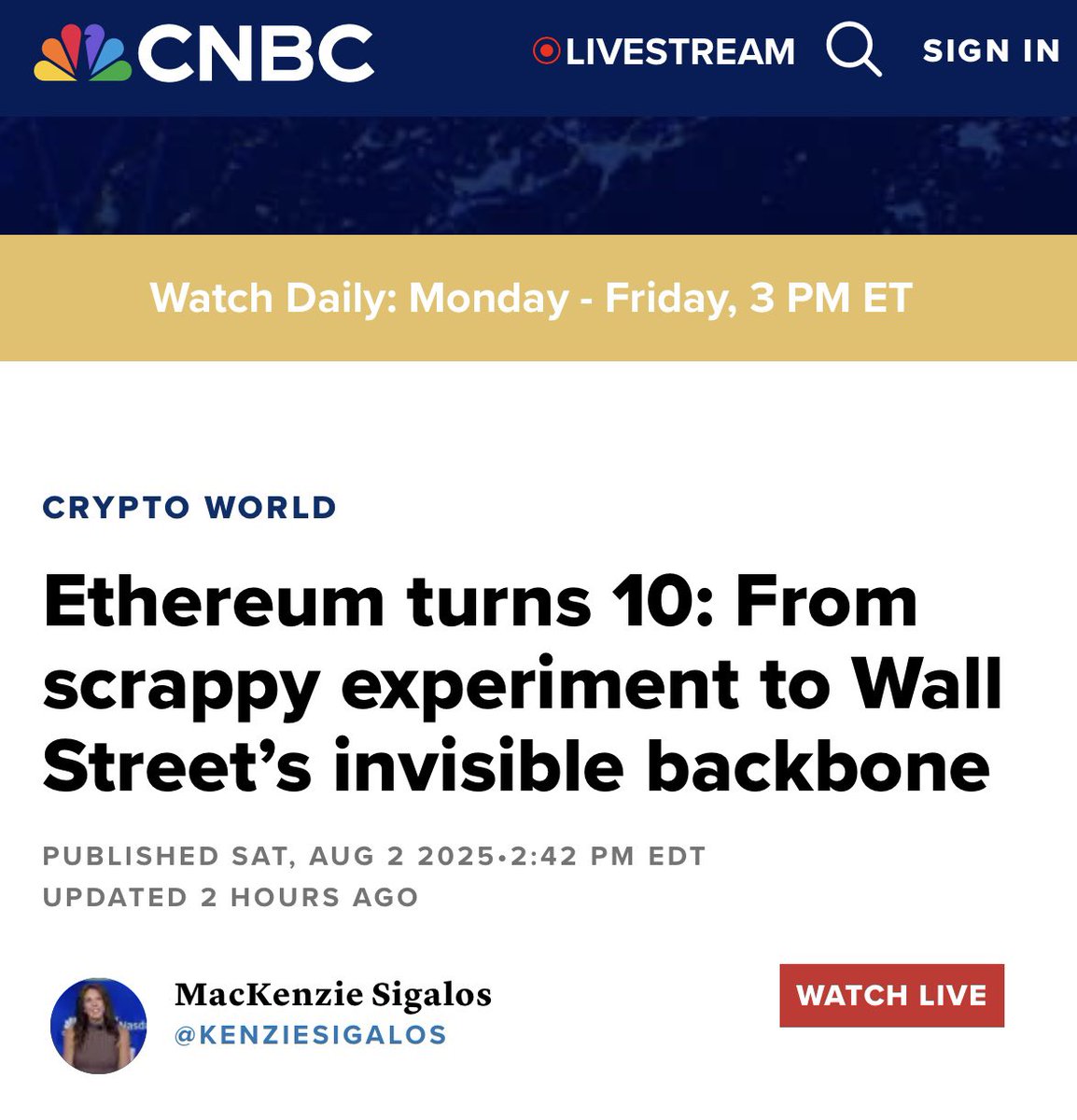
Ten years after launch, Ethereum has evolved from a scrappy experiment to the hidden infrastructure powering Wall Street’s next generation of finance.
Stablecoins — digital dollars that live on Ethereum — power trillions in payments, tokenized assets and funds are moving on-chain, and Robinhood recently rolled out tokenized U.S. equities via Arbitrum, an Ethereum-based layer two.
Circle’s USDC — the second-largest stablecoin — still settles around 65% of its volume on Ethereum’s rails. According to CoinGecko’s latest “State of Stablecoins” report, Ethereum accounts for nearly 50% of all stablecoin activity.
Between Circle’s IPO and the stablecoin-focused GENIUS Act, now signed into law by President Donald Trump, regulators have new reason to engage with, rather than fight, this transformation.
Data from Deutsche Bank shows stablecoin transactions hit $28 trillion last year — more than Mastercard and Visa combined. The bank itself has announced plans to build a tokenization platform on zkSync, a fast, cost-efficient Ethereum layer two designed to help asset managers issue and manage tokenized funds, stablecoins, and other real-world assets while meeting regulatory and data protection requirements.
Digital asset exchanges like Coinbase and Kraken are racing to capture this crossover between traditional securities and crypto.
As part of its quarterly earnings release, Coinbase said this week it’s launching tokenized stocks and prediction markets for U.S. users in the coming months, a move that would diversify its revenue stream and bring it into more direct competition with brokerages like Robinhood and eToro.
Kraken announced plans to offer 24/7 trading of U.S. stock tokens in select overseas markets.
BlackRock’s tokenized money market fund, BUIDL, launched on Ethereum last year, offering qualified investors on-chain access to yield with real-time redemptions settled in USDC.
https://www.cnbc.com/2025/08/02/ethereum-turns-10-from-scrappy-experiment-to-wall-streets-invisible-backbone.html